The Carnegie Medal is a British literary award that annually recognises one outstanding new English-language book for children or young adults. It is conferred upon the author by the Chartered Institute of Library and Information Professionals (CILIP). CILIP calls it "the UK's oldest and most prestigious book award for children's writing".
Buile Shuibhne or Buile Suibne is a medieval Irish tale about Suibhne mac Colmáin, king of the Dál nAraidi, who was driven insane by the curse of Saint Rónán Finn. The insanity makes Suibhne leave the Battle of Mag Rath and begin a life of wandering. He dies under the refuge of St. Moling.

Bridge to Terabithia is a novel written by Katherine Paterson, about two children named Leslie and Jesse who create a magical forest kingdom in their imaginations. The book was originally published in 1977 by Thomas Crowell, and in 1978, it won the Newbery Medal. Paterson drew inspiration for the novel from a real event that occurred in August 1974 when her son’s friend was struck dead by lightning.
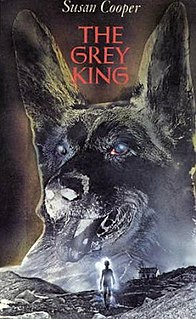
The Grey King is a contemporary fantasy novel by Susan Cooper, published almost simultaneously by Chatto & Windus and Atheneum in 1975. It is the fourth of five books in her Arthurian fantasy series The Dark is Rising.
The Nestlé Children's Book Prize, and Nestlé Smarties Book Prize for a time, was a set of annual awards for British children's books that ran from 1985 to 2007. It was administered by BookTrust, an independent charity that promotes books and reading in the United Kingdom, and sponsored by Nestlé, the manufacturer of Smarties candy. It was one of the most respected and prestigious prizes for children's literature.
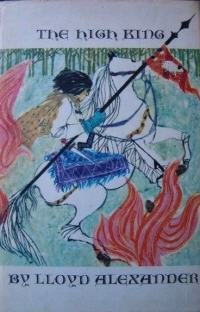
The High King (1968) is a high fantasy novel by American writer Lloyd Alexander, the fifth and last of The Chronicles of Prydain. It was awarded the Newbery Medal for excellence in American children's literature in 1969.

Geraldine McCaughrean is a British children's novelist. She has written more than 170 books, including Peter Pan in Scarlet (2004), the official sequel to Peter Pan commissioned by Great Ormond Street Hospital, the holder of Peter Pan's copyright. Her work has been translated into 44 languages worldwide. She has received the Carnegie Medal twice and the Michael L. Printz Award among others.
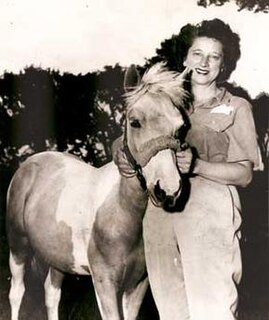
Marguerite Henry was an American writer of children's books, writing fifty-nine books based on true stories of horses and other animals. She won the Newbery Medal for "King of the Wind", a 1948 book about horses and she was a runner-up for two others. One of the latter, Misty of Chincoteague (1947), was the basis for several sequels and for the 1961 movie Misty.
The Michael L. Printz Award is an American Library Association literary award that annually recognizes the "best book written for teens, based entirely on its literary merit". It is sponsored by Booklist magazine; administered by the ALA's young-adult division, the Young Adult Library Services Association (YALSA); and named for the Topeka, Kansas, school librarian Mike Printz, a long-time active member of YALSA.
Zilpha Keatley Snyder was an American author of books for children and young adults. Three of Snyder's works were named Newbery Honor books: The Egypt Game, The Headless Cupid and The Witches of Worm. She was most famous for writing adventure stories and fantasies.

The Witch of Blackbird Pond is a children's novel by American author Elizabeth George Speare, published in 1958. The story takes place in late-17th century New England. It won the Newbery Medal in 1959.

Sharon Creech is an American writer of children's novels. She was the first American winner of the Carnegie Medal for British children's books and the first person to win both the American Newbery Medal and the British Carnegie.
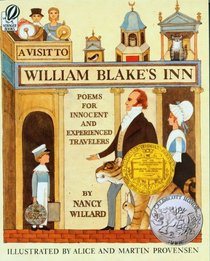
A Visit to William Blake's Inn: Poems for Innocent and Experienced Travelers is a children's picture book written by Nancy Willard and illustrated by Alice and Martin Provensen, published by Harcourt Brace in 1981. The next year Willard won the annual Newbery Medal and the Provensens were one runner-up for the Caldecott Medal from the professional children's librarians. William Blake's Inn was the first Newbery-winning book to also be named a Caldecott Honor Book. Last Stop on Market Street later won the 2016 Newbery Medal and a Caldecott Honor.

Adam of the Road is a novel by Elizabeth Janet Gray Vining. Vining won the Newbery Medal for excellence in American children's literature in 1943 from the book. Set in thirteenth-century England, the book follows the adventures of a young boy, Adam. After losing his spaniel and minstrel father, Adam embarks on a series of escapades throughout medieval England. The book is illustrated by Robert Lawson.
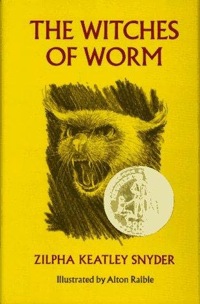
The Witches of Worm is a 1972 young adult novel by Zilpha Keatley Snyder. It received the Newbery Honor citation in 1973.
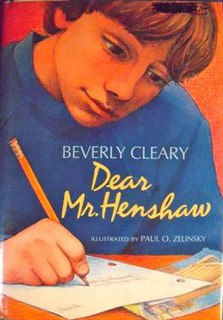
Dear Mr. Henshaw is a juvenile epistolary novel by Beverly Cleary and illustrator Paul O. Zelinsky that was awarded the Newbery Medal in 1984. Based on a 2007 online poll, the National Education Association listed the book as one of its "Teachers' Top 100 Books for Children".

A String in the Harp is a children's fantasy novel by Nancy Bond first published in 1976. It received a 1977 Newbery Honor award and the Welsh Tir na n-Og Award. It tells of the American Morgan family who temporarily move to Wales, where Peter Morgan finds a magical harp key that gives him vivid visions of the past. This well-received novel is an unusual time travel story, with its focus on the emotional pain and separation the Morgans experience after the death of their mother and the gradual healing they find through their experiences.
Emma Chichester Clark is a British children's book illustrator and author. She has published over 60 books and is best known for her series of picture books about a child's toy called Blue Kangaroo.
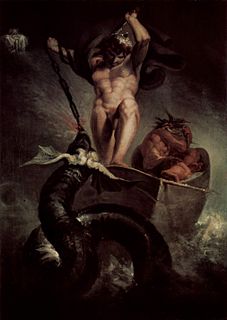
The stoor worm, or Mester Stoor Worm, was a gigantic evil sea serpent of Orcadian folklore, capable of contaminating plants and destroying animals and humans with its putrid breath. It is probably an Orkney variant of the Norse Jörmungandr, also known as the Midgard Serpent, or world serpent, and has been described as a sea dragon.
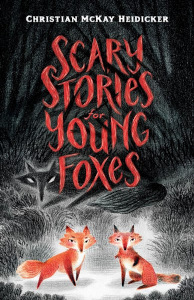
Scary Stories for Young Foxes is a 2019 children's book written by Christian McKay Heidicker, with illustrations by Junyi Wu. The book, published by Henry Holt and Company, was first envisioned to be similar to some of the Berenstain Bears' scary stories, but was rewritten into a collection of tales based on classic horror stories.














